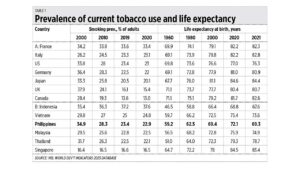The quest for justice

The quest for justice has been long and tortuous. We hope we can see the light at the end of the tunnel in our lifetime. On Feb. 1, I was one of the reactors in the panel on “Delivery of Justice” at the Justice Summit, organized by the Justice Reforms Initiative (JRI) and the Supreme Court.
JRI is an umbrella organization consisting of major business associations, judicial advocacy groups, and foreign chambers of commerce that promote the advancement of the rule of law, socioeconomic justice, global competitiveness, and sustainable economic growth. It is currently headed by Francisco Ed. Lim as chairman and Jose Jerome R. Pascual III as president.
The other speakers and reactors were lawyers, judges, businessmen, and law practitioners. I was the only NGO worker who spoke based on our experiences in our encounters with the justice system. Our organization, the Movement for Restoration of Peace and Order (MRPO), has been an advocate for justice reform for 30 years since we started in 1993 to combat the kidnapping menace.
OUR MANDATEFor 30 years, we saw the urgent need to overhaul the entire system in the delivery of justice — the police, prosecutors, courts, correction, and community. It has been a long, tedious, frustrating process and we despair of having any success. But it’s not all “just’tiis.” We do see some progress, especially in the Supreme Court, which has worked hard for reforms and transformation, as attested by this Justice Summit convened with the private sector, and the positive results in the survey recently conducted on the court system.
When we organized MRPO in 1993, 31 years ago, kidnapping was at its peak because it was an almost perfect crime — victims did not report the crime, they did not cooperate with the police, they paid the ransom fast and paid big. Hence, kidnapping was a lucrative cottage industry back then. One factor behind the success in the anti-kidnapping campaign is when we succeeded in encouraging victims to file cases and put kidnappers behind bars. But it was an uphill battle because of the tedious, long drawn out and expensive trials. There was a 16-year-long case in Quezon City where the parents of the kidnap victim told us that they wouldn’t have spent so much had they just paid the ransom. The long-delayed trial — that changed judges several times — was a heavy burden financially and mentally. We also had cases where a young boy of eight was already a college graduate when his kidnapper was finally put behind bars.
The Court has been addressing this as they impose penalties on judges with backlogs, but to date, we still contend with cases that age more than 10 years and, often, the judge who decides the case is not the one who heard the case from the beginning.
WEAPONIZATION OF THE LAWWorse, perhaps, is the weaponization of the law. The onus does not lie with the courts only, but also with the police and prosecution, but the Courts have an obligation to hopefully be the stalwart and the key pillar to confront this issue that has been happening with impunity, especially in recent years.
As if nuisance cases like those against journalists like Maria Ressa and Rappler were not enough, the cases of the political prisoners are much worse. Senator Leila de Lima’s case is just one example, but she was very lucky compared to other political prisoners who are incarcerated for more than 10 years on trumped up charges and planted evidence. These political prisoners are in prison because of their beliefs, not because they broke the law.
To cite a few examples:
1. The police use cases where the suspects are John Does then put in the political prisoner’s name just because they belong to the progressive left. Imagine murder charges made against them when they have never been to the place where the crime supposedly happened.
2. To make cases of illegal possession of firearms non-bailable, police add explosives to the charges, like a pre-war, vintage, worn-out grenade without a pin. The prosecutors who know about that evidence could have easily dismissed the case. Or the courts could have granted bail. Non-bailable crimes mean these fathers or mothers cannot see or take care of their children, or they cannot take care of their own parents.
3. In some cases, when one case is dismissed, new ones are added for no reason. For example, names of political prisoners are added to the original cases filed vs. Joma Sison and the Tiamzons, just to make sure they do not go free when their own cases are dismissed.
4. Two Dumagats were ordered by a military unit to carry the dead body of a supposed rebel. But upon reaching the military camp, the two were not allowed to return to their homes and were instead arrested and are in jail till now. The poor guys are in disbelief, not knowing what crime they committed, but no one seems to care.
5. The oldest political prisoner, 85-year-old Gerardo de Leon, just wants to go home to Bicol to see his wife before he dies or she dies. But even though Tatay Gerry proved he was never a member of the NPA who claimed credit for the death of the soldier he was accused of killing, he’s suffering in jail. His mistake? Prior to the ambush of the soldier, he spoke up against a massacre in his province related to agrarian issues.
Through the years, our courts, lawyers, and practitioners have encountered horror stories of gross miscarriage of justice. Our government intensely hates progressive groups, but government remains to be the most effective recruiter of dissidents due to widespread social injustice, and our courts as last resort often become instruments of such injustice.
Naturally, I again emphasize, the onus does not lie with the courts alone. The police and the prosecution bear huge responsibility too. We badly need prosecutors and judges who can discern nuisance cases filed for political purposes and be brave enough to just dismiss them outright. We badly need law enforcers who don’t allow themselves to be used for political purposes and perpetuate the weaponization of our laws.
Last and most importantly, we need the five pillars of the criminal justice system to work in synergy and cooperation, and not in opposition, to push the justice reform agenda. Chief Justice Alexander Gesmundo’s impressive action plan for responsive real-time justice should not remain on paper but should be swiftly acted upon by all.
Teresita Ang See is a social activist, cultural worker, educator, and author. She has made outstanding contributions to peace and social cohesion for the past 50 years. She has written and co-authored 17 books, including Tsinoy – the Story of the Chinese in Philippine Life, and five volumes of Chinese in the Philippines: Problems and Perspectives. She is better known in her anti-crime advocacy as the prime mover behind the Movement for Restoration of Peace and Order. She serves as the executive chair of Manila’s People’s Law Enforcement Board to this date.




